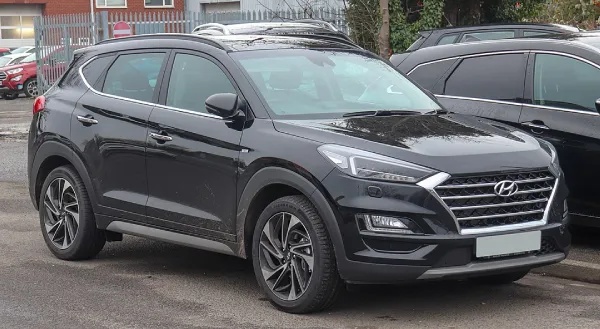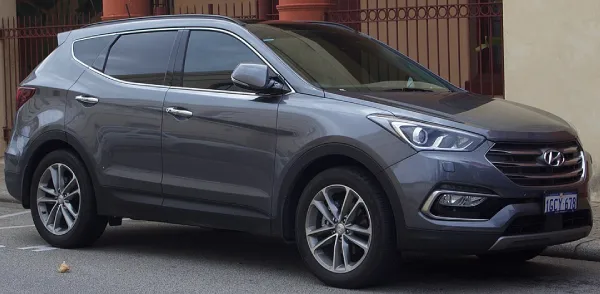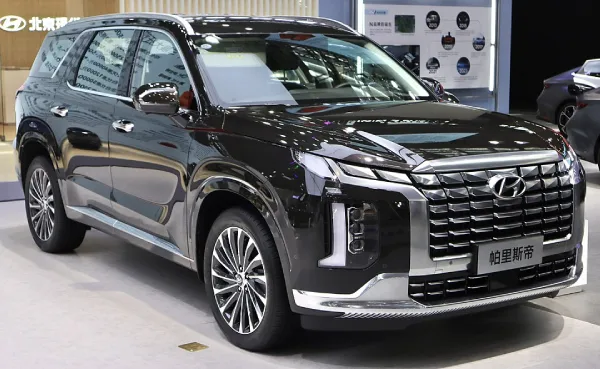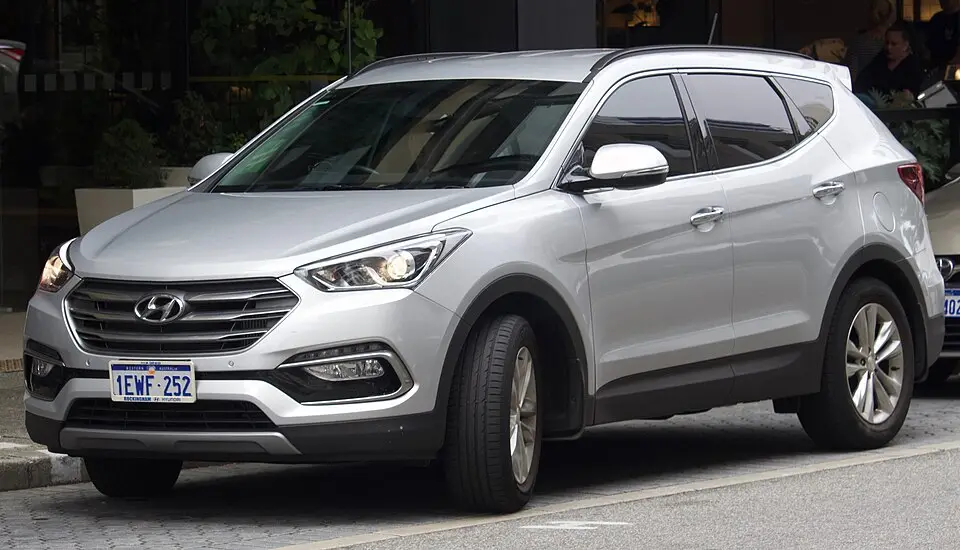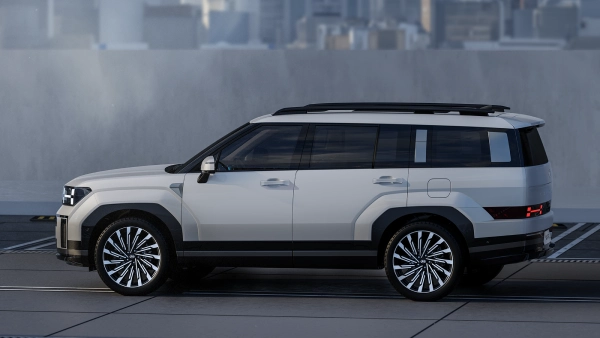Table of Contents
- Introduction
- Engine and performance of hyundai Tucson 2021
- driving Hyundai Tucson
- interior and inside hyundai Tucson
- Inside
- Safety and Technology Tucson’
Introduction
Despite its apparent contempt for the laws of entropy, the Hyundai Tucson has been improving with age.
The second-generation 2009-2015 model, referred to as the ix35 in Europe, was more competitive overall and easier to drive than the first-generation 2004-2010 Tucson, which was only useful and reasonably priced. Resuming the Tucson nameplate, the third-generation 2015–2020 model demonstrated a respectable effort. But it was with this fourth-generation model that the Tucson truly made a splash.
You should definitely look at the Hyundai Tucson if interior room is a top concern for you. The boot is roomy enough to accommodate four tall adults. The interior quality is also impressive. Though high-end competitors like the Range Rover Evoque feel even more unique inside, there are SUVs that are more comfortable and handle better.
✅Pros
- A few good features for a base-spec vehicle
- Excellent quality of riding around town
- Comfortable and roomy second row
❌Cons
- A 2.0-liter engine might work better.
- Fuel economy is lower than those of more established rivals.
- Modern LED DRLs contrast sharply with halogen headlights.
Engine and performance of hyundai Tucson 2021
The Tucson only comes with a selection of 1.6-liter turbocharged petrol engines; no diesel engines are available. The 148-hp 1.6-150 entry-level model is available with or without 48-volt mild hybrid technology (referred to as MHEV). A 180 48V MHEV variant with 178 horsepower is also available.
The range-topping 261bhp 1.6 Plug-in Hybrid (PHEV) comes last, followed by a full hybrid, the 227bhp 1.6 230 Hybrid.
The 148-bhp 1.6-150 has more than enough speed, although it takes a little while for the automatic gearbox to give you a respectable burst of acceleration. The 1.6 180 MHEV with 178 horsepower is a powerful vehicle that is equipped with four-wheel drive and an automatic gearbox.
With the petrol engine and electric motor working together, the 227bhp 1.6 230 Hybrid isn’t a slacker away from the lights, and its battery is large enough for brief electric driving spurts in stop-start traffic. However, when you put your foot down, its six-speed dual-clutch automatic gearbox hesitates, taking a while to select a gear.
Officially, the 1.6 Plug-in Hybrid can go up to 38 miles on electricity alone. Although the Ford Kuga PHEV comes close, that is one of the best electric-only ranges available in a plug-in hybrid SUV of this size. It is incredibly smooth to drive in EV mode and fast enough to be enjoyable, but once more, the six-speed transmission is a little sluggish.
driving Hyundai Tucson
Compared to vehicles like the Volvo XC40 and Skoda Karoq, the Tucson is more startling over sharper ridges and potholes. Additionally, it has trouble settling down on a motorway and has a tendency to rock around on uneven surfaces. Its ability to ride over softer undulations with respectable ease is a bonus. Due to their smaller, 17-inch wheels, entry-level SE Connect vehicles are the most supple.
Although it’s not, the Tucson’s light steering and comparatively small steering wheel give the impression that it would be a sporty vehicle. It moves along rather contentedly when you’re driving slowly, but the steering becomes less comforting as you apply more pressure.
The 1.6 230 Hybrid is quiet in the city and silent while the petrol engine is running since it can run in electric mode. Although it cannot run solely on electricity, the MHEV is similarly quiet and has the ability to switch off its engine when coasting. The automatic gearbox in the Hybrid shifts smoothly, while the one in the Plug-in Hybrid and MHEV might be a touch jerky when manoeuvring.
| Key details | 2021 Hyundai Tucson |
| Price (MSRP) | $34,500 plus on-road costs |
| Colour of test car | Deep Sea |
| Price as tested | $35,095 plus on-road costs |
| Options | Premium paint ($595) |
| Rivals | Honda CR-V | Mazda CX-5 | Toyota RAV4 |
interior and inside hyundai Tucson
Standard digital instrument clusters are 10.3 inches and are simple to read quickly. Although the majority of the buttons on the dashboard are touch-sensitive rather than press buttons, they are all positioned closely around you and can be challenging to use by feel. To locate and utilise them, you may have to look away from the road.
Every Tucson comes equipped with an infotainment system with a 10.3-inch touchscreen that has intelligent graphics and is as sharp as the top flatscreens. Compared to the Peugeot 3008 and XC40, the software is generally more snappy and the menus are simple. It’s not as fast as the greatest touchscreens, such as those found in the VW Tiguan and Karoq, because some of the features have a slight delay.
If your family SUV will be used frequently to transport both adults and children, the Tucson is well worth looking at because its front and rear seats are excellent for taller people. Even with the front seats moved far back, it can comfortably fit two six-footers in the back.
It has one of the largest boots in the class as well. Even in the Plug-in Hybrid, which has the smallest boot in the Tucson lineup, we were able to fit seven carry-on items under the tonneau cover. However, choosing the Hybrid or Plug-in Hybrid versions does result in a slight loss of capacity for the batteries. That is comparable to competitors like the BMW X1 and the XC40.
Inside
The sturdy centre console is a decent size, provides ample storage, and has room behind the centre stack and your two standard cupholders. Power outlets come with two USB-A ports and a wireless charging pad, which is unusual for a base-spec vehicle.
For one straightforward reason, the 2021 Tucson’s second row is excellent: space. Adults may squeeze in rather comfortably because there is a lot of it, even if there is someone in front who has long legs.
I can tell that the absence of dancing feet on the seat back as we drove about is another good sign of plenty of second-row space, even if my own children are no longer in space-sucking rearward-facing seats.
In addition to cupholders in the fold-down armrest, the second row features USB-A power outlets and air vents. Each door can accommodate a drink bottle, and the inexpensive seats offer adequate view.
The Tucson’s second-row seats have a tilting backrest, which is a small feature you might not initially notice. In addition to making adults a bit more comfortable at times, I’ve found that this additional adjustment is useful for tightening child seats.
The Tucson’s overall length of 4630mm makes the boot a good choice as well. Since this model is 150 mm longer than the departing model, there is more space inside. It has a nice five-seater arrangement with its 539L (VDA). You will have 1860L of storage space ready for your click-and-collect furniture adventures if you fold that second row flat (yes, it does go flat). Unfortunately, you are currently unable to enjoy an inexpensive hot dog.
Safety and Technology Tucson’
Hyundai’s ‘Advanced Smartsense Safety Suite’ is a feature of the Tucson’s standard safety equipment, which is rather good. Blind-spot monitoring, lane-keep assistance, intelligent speed limit assistance, tyre pressure monitoring, forward collision avoidance (Hyundai’s term for autonomous emergency braking) with cyclist and pedestrian detection, junction and turning detection for the autonomous emergency braking, rear parking sensors, and a reversing camera are all included.
It lacks a 360-degree camera, reverse parking collision avoidance aid, and a more sophisticated blind-spot-view camera system. It is necessary to look into the top-grade Highlander specification for these components.
The Hyundai Tucson has not yet undergone crash testing by the local crash-testing authority because it is a new model. However, given the equipment it comes with and the fact that the 2021 Tucson is built on a similar N3 platform as many five-star Kias and Hyundais, its safety credentials appear to be excellent.

